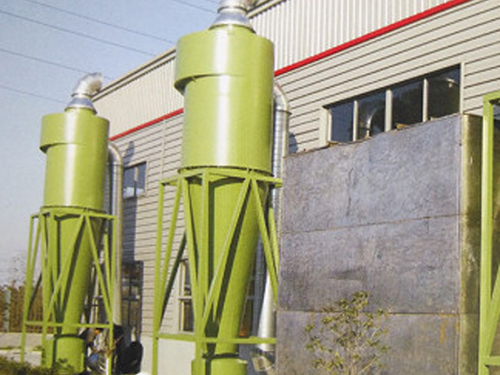SURVIVAL THROUGH QUALITY
PRODUCT CENTER
-
Pulse dust collector
-
Mine dust collector
-
Boiler dust collector
-
Metallurgical dust collector
-
Carbon plant dust collector
-
Chemical dust collector
-
Rubber dust collector
-
Woodworking dust collector
-
Single machine dust collector
-
Static electricity Dust collector
-
Cyclone dust collector
-
Wet dust collector
-
Filter cartridge dust collector
-
Insert valve (gate valve)
-
Ventilation butterfly valve (cold air valve)
-
Spiral conveyor (auger)
-
Scraper conveyor
-
Dust humidifier
-
Bucket elevator
-
Ash discharge valve
-
Material Handling Equipment
-
Wet scrubber
-
Dust collector
-
Dust removal filter bag
-
Dust removal bag cage
-
Polishing platform
-
Waste gas treatment equipment
-
Electric control cabinet
-
Fan
-
Smoke welding machine
-
Liquid level switch
-
Dust removal filter element
-
Aeration cushion
-
Sweeper
-
Dust suppression device
-
Solenoid valve

Cyclone dust collector
Cyclone dust collector is a type of dust removal device. The dust removal mechanism is to make the dusty airflow rotate, use centrifugal force to separate and capture dust particles from the airflow, and then use gravity to make the dust particles fall into the ash hopper. Each component of a cyclone dust collector has a certain size ratio, and any change in the ratio relationship can affect the efficiency and pressure loss of the cyclone dust collector. Among them, the diameter of the dust collector, the size of the inlet, and the diameter of the exhaust pipe are the main influencing factors. When using, it should be noted that when a certain limit is exceeded, favorable factors can also be transformed into unfavorable factors. In addition, some factors are beneficial for improving dust removal efficiency, but they can increase pressure loss, so adjustments to each factor must be taken into account.
A cyclone dust collector is composed of an intake pipe, an exhaust pipe, a cylinder, a cone, and an ash hopper. The cyclone dust collector has a simple structure, is easy to manufacture, install, and maintain, and has low equipment investment and operating costs. It has been widely used to separate solid and liquid particles from airflow, or to separate solid particles from liquid. Under normal operating conditions, the centrifugal force acting on particles is 5-2500 times that of gravity, so the efficiency of cyclone dust collectors is significantly higher than that of gravity settling chambers. Based on this principle, a cyclone dust removal device with a dust removal efficiency of over 90% has been successfully developed. Among mechanical dust collectors, cyclone dust collectors are the most efficient. It is suitable for the removal of non viscous and non fibrous dust, mostly used to remove particles larger than 5 μ m. The parallel multi tube cyclone dust collector device also has a dust removal efficiency of 80-85% for particles larger than 3 μ m. The cyclone dust collector constructed with special metal or ceramic materials that are resistant to high temperature, wear and corrosion can operate at temperatures up to 1000 ℃ and pressures of 500 × 105Pa. From technical and economic considerations, the pressure loss control range of cyclone dust collectors is generally 500-2000Pa. Therefore, it belongs to the medium efficiency dust collector and can be used for the purification of high-temperature flue gas. It is a widely used dust collector, mainly used for boiler flue gas dust removal, multi-stage dust removal, and pre dust removal. Its main drawback is its low removal efficiency for small dust particles (<5 μ m).
Preparation work
1. Check if all connecting parts are securely connected.
2. Check the sealing of the joint between the dust collector and flue, dust collector and ash hopper, ash hopper and ash discharge device, ash conveying device, etc., to eliminate dust and air leakage.
3. Close the baffle valve and start the ventilation fan gradually after there are no abnormalities.
technical requirement
1. Pay attention to changes in easily worn parts such as the inner wall of the outer cylinder.
2. Pay attention to the adhesion, blockage, and corrosion of dust when the temperature of dusty gas changes or the humidity decreases.
3. Pay attention to changes in pressure difference and the condition of discharged smoke color. Because wear and corrosion can cause perforation of the dust collector and lead to dust emissions, the dust removal efficiency decreases, the exhaust smoke color deteriorates, and the pressure difference changes.
4. Pay attention to the airtightness of various parts of the cyclone dust collector, and check the changes in the gas flow rate and dust concentration of the cyclone drum.

